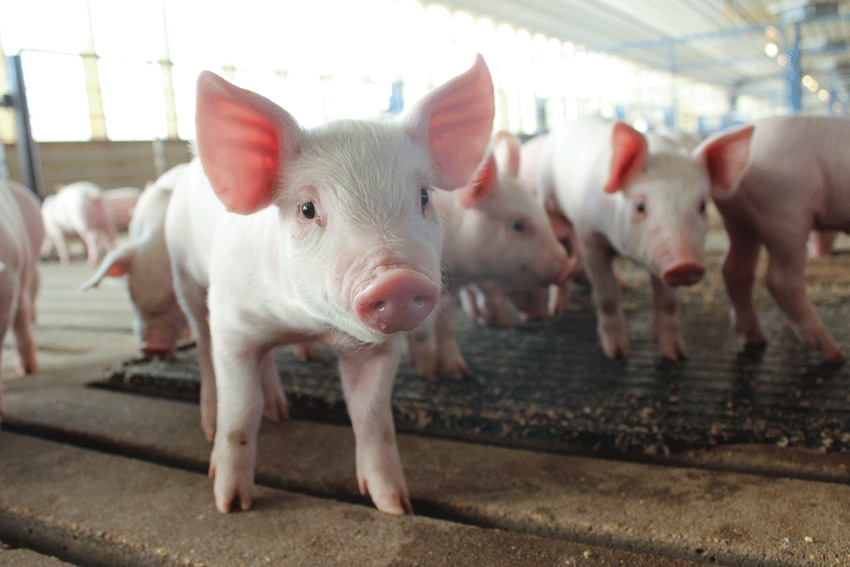November 11, 2016

Raising a healthy pig comes down to the pig’s gut health. The gut contains 70% of his immune system, which makes it a crucial barrier to keep out pathogens and toxins. The investment you make in nutrition to support gut health can pay off by helping to set up the pig for lifetime production and performance.
One way to optimize gut health is to support it during times of stress, such as weaning, vaccination or transportation. You can support gut health with the use of complex creep feeds, complex starter feeds and water.
The ingredients in complex feeds are more readily digested and absorbed than those in simple feeds such as corn or soybean meal. Ample water also supports ease of digestion.
[CHARTBEAT:3]
Challenges to the gut
Stress, insufficient feed intake and insufficient water intake can lead to gut atrophy (damage). A common result of atrophy is a reduction in the gut’s ability to absorb nutrients. Additionally, if the pig’s gut integrity breaks down, food particles, toxins or bacteria can start to “leak” through the gut barrier.
The leaked particles can irritate the gut wall, triggering an inflammatory response that can spread through the body. The inflammation can hamper the pig’s ability to digest feed and increase his risk for illness and infection.
Tools for optimal health
To work toward a pig’s optimal health and to give the young pig the best chance to thrive, we need to focus our efforts on getting him to consume adequate amounts of a complex, quality feed. Tools at our disposal to create eaters include:
Creep feeding. In a recent Kansas State University study, 68% of the pigs fed creep became eaters compared to 28% of those fed only sow’s milk. The pigs that became eaters during preweaning gained 6.2% better and had greater average daily feed intake postweaning than non-eaters. Also, eaters experienced reduced postwean lag, and groups of eaters had improved body weight uniformity.
Mat feeding. Pigs are more likely to eat in groups, so mat feeding is a dependable way to encourage intake. Place fresh feed on mats as soon as pigs arrive at the facility to encourage intake for optimal gut health.
High palatability. Despite their “will eat everything” reputation, pigs have a highly developed sense of taste. They have nearly three times as many taste buds as humans and more than 11 times as many taste buds as dogs. Feed that smells and tastes appealing can help encourage the young pig to get up and eat.
Water intake. Fewer than half of weaning pigs take their first drink within 24 hours of weaning. Do as much as you can to encourage them to drink. Be sure your pigs know how to find the waterers when they arrive. Consider using a high-quality electrolyte to enhance the palatability and hydration power of the water.
When creating a plan for feeding postweaned pigs, we need to think about supporting their developing immune systems so they will function well through the nursery and on to finishing.
An effective way to support that development is to help support the pig’s gut. As long as his gut health is optimal, the pig will focus his energy on eating and growing, making the most of your early investment in his nutrition.

For more information about supporting gut health and optimizing pig performance from wean to finish, visit progresstoprofit.com.
References: R.C. Sulabo, M.D. Tokach, J.R. Bergstrom, J.M. DeRouchey, R.D. Goodband, S.S. Dritz, and J.L. Nelssen. 2009. Effects of Creep Diet Complexity on Individual Consumption Characteristics and Growth Performance of Neonatal and Weanling Pigs. Kansas State University. Agricultural Experiment Station and Cooperative Extension Service, Swine Day 2009 Report. Chamorro et al., 1993 Miller and Bartoshuk, 1991
You May Also Like



